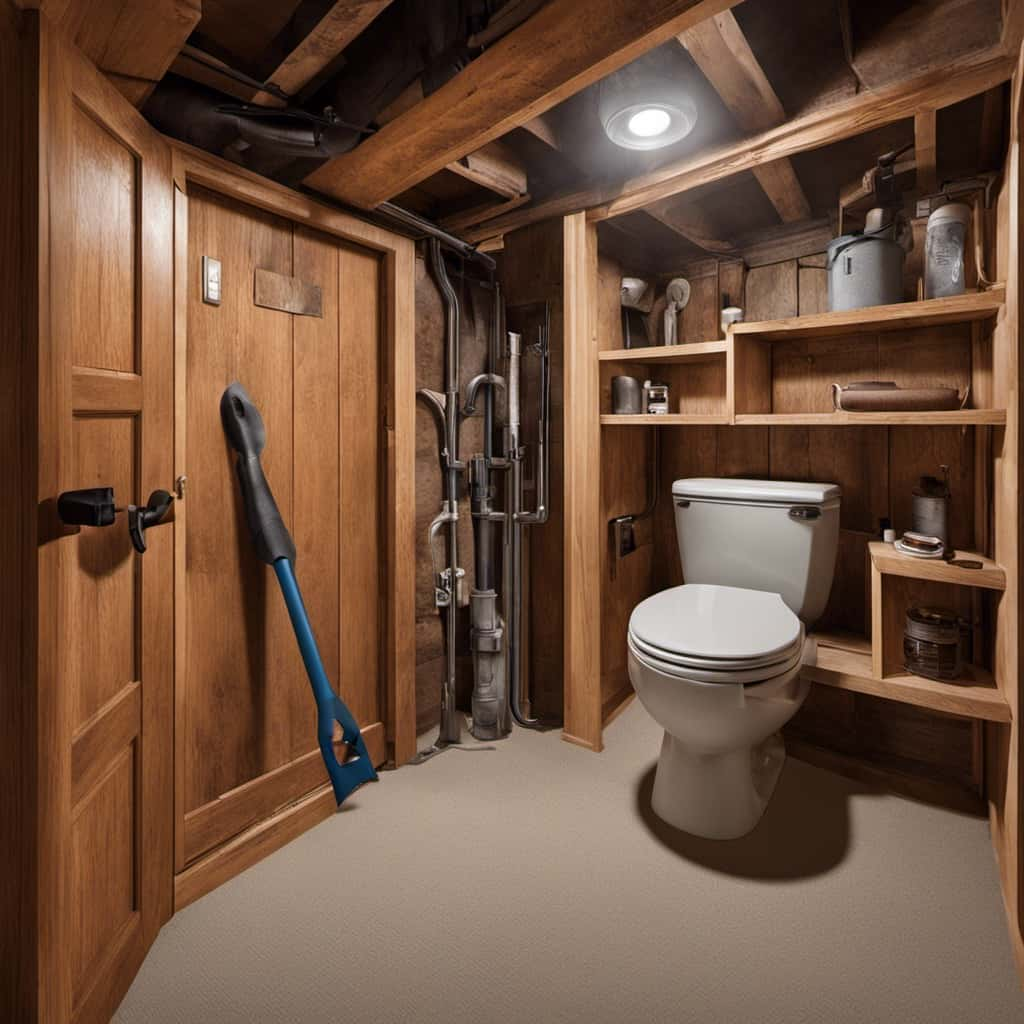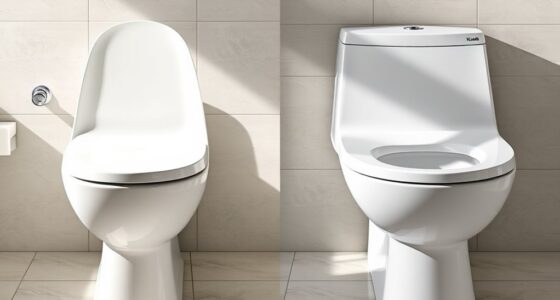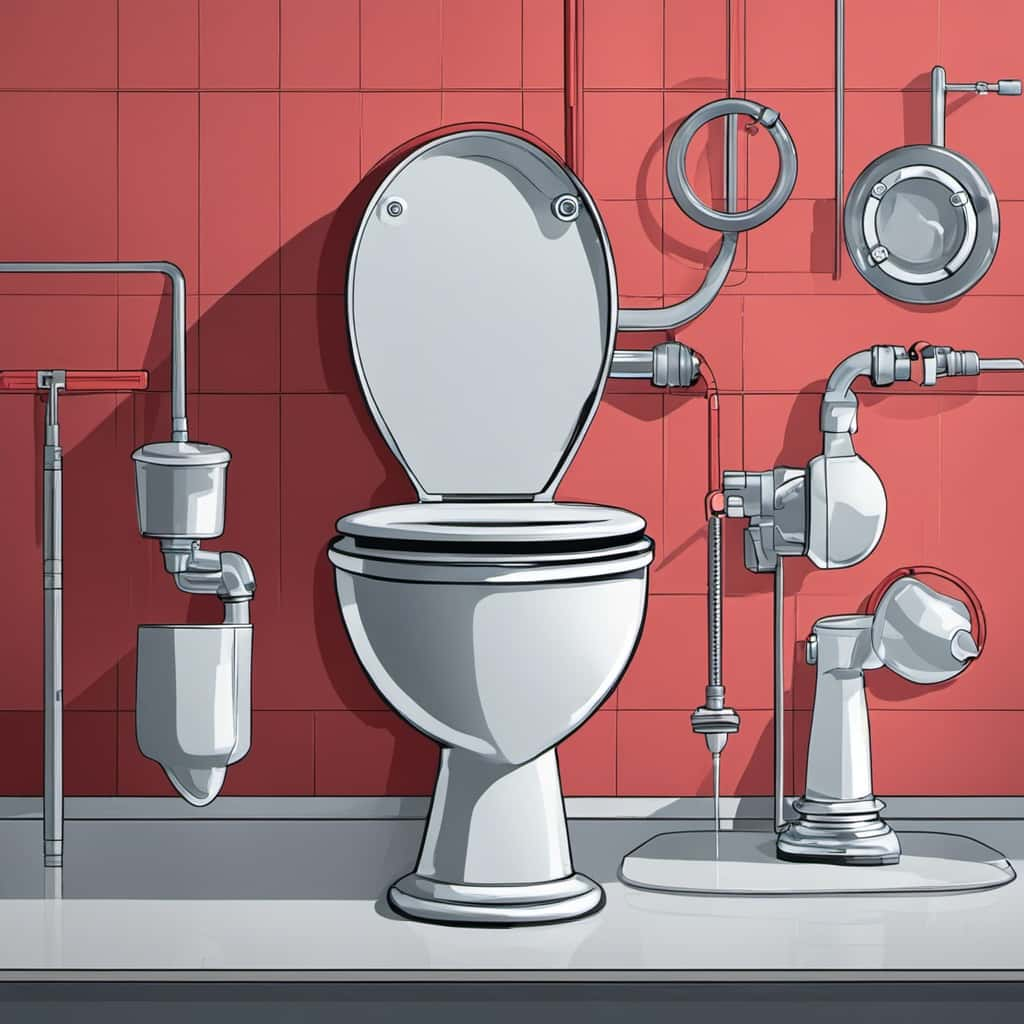Imagine stepping into ancient Rome, where the bustling streets are filled with chariots and the scent of freshly baked bread. But have you ever wondered what the Romans did when nature called?
In this article, we will explore the fascinating world of Roman sanitation practices, from their ingenious aqueducts and communal latrines to their meticulous hygiene rituals.
Join us on this journey to uncover the secrets of how the Romans handled their business in the most civilized way possible.
Key Takeaways
- Romans had a sophisticated system of ancient plumbing for waste removal, with toilets called ‘latrines’ that flushed waste away through underground channels and drains connected to the main sewer system.
- Aqueducts played a crucial role in distributing clean water throughout the city, ensuring access to proper sanitation and clean water.
- Communal latrines and public toilets were common in Roman cities, designed to minimize the risk of contamination and foul odors, with a constant flow of water to quickly flush waste away.
- Romans used various tools and practices for maintaining cleanliness after using the toilet, such as a sponge on a stick or cloth for cleaning, as toilet paper did not exist.
Roman Sanitation Practices
When it comes to Roman sanitation practices, we’d often employ a variety of methods to ensure cleanliness and hygiene. Toilet habits were an important aspect of daily life for the Romans, and they had a sophisticated system of ancient plumbing to facilitate waste removal.
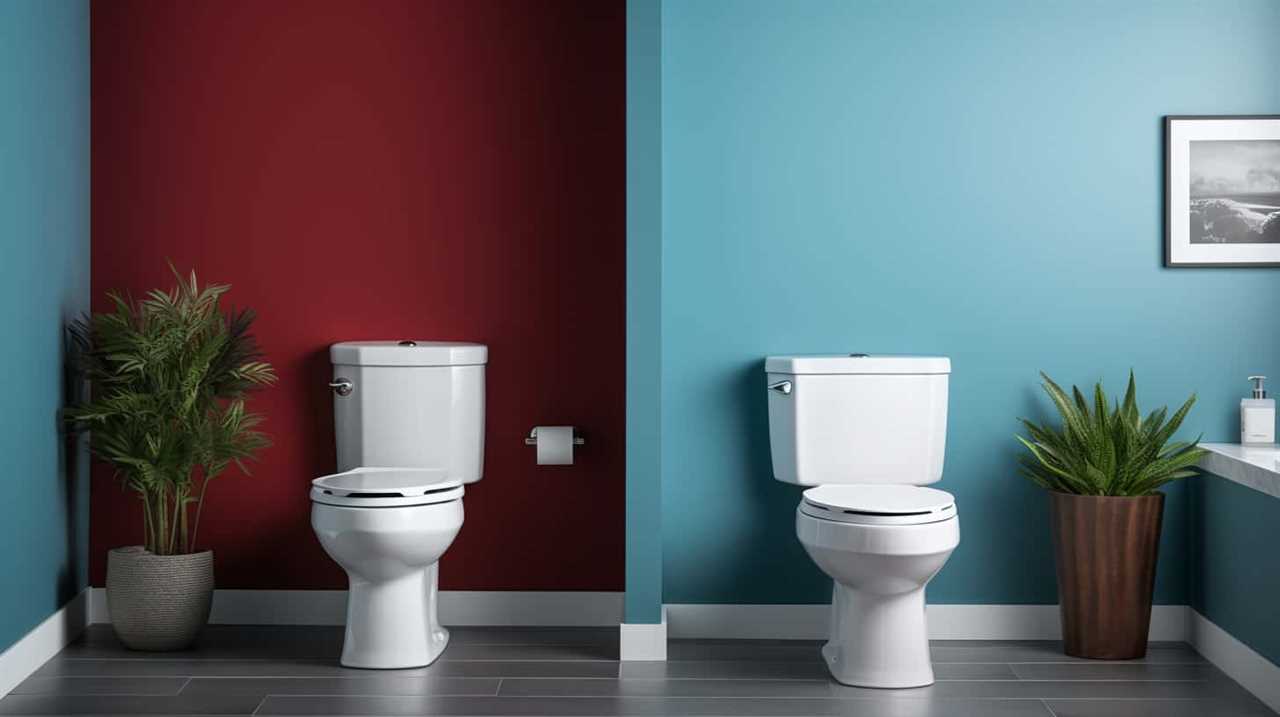
Most households had a simple toilet called a ‘latrine’, which consisted of a hole in the ground with a seat or bench placed over it. Waste would then be flushed away through a network of underground channels and drains. These channels were connected to the city’s main sewer system, which carried the waste to a nearby river or stream.
The Romans understood the importance of proper sanitation and took measures to ensure that their toilet habits didn’t pose a threat to public health.
Aqueducts and Water Supply
To ensure proper sanitation in ancient Rome, we relied on a network of aqueducts and a reliable water supply. The aqueducts played a crucial role in the distribution of water throughout the city, providing a constant flow of clean water to public fountains, baths, and private households. These impressive structures, consisting of arches and channels, allowed water to be transported from distant sources to the heart of the city. The water supply was carefully managed, with dedicated officials overseeing its distribution and maintenance. Ancient plumbing systems were also installed in homes and public buildings, allowing for the disposal of waste and the provision of clean water for various purposes. This intricate network of aqueducts and water supply ensured that ancient Romans had access to proper sanitation and clean water for their daily needs.
| Aqueducts | Water Supply | Ancient Plumbing |
|---|---|---|
| Transported water | Managed distribution | Provided clean water |
| Consisted of arches | Overseen by officials | Allowed waste disposal |
| Connected to fountains, baths, and households | Maintained the system | Installed in homes and public buildings |
Communal Latrines and Public Toilets
Now that we’ve discussed the aqueducts and water supply, how did ancient Romans handle the use of communal latrines and public toilets?
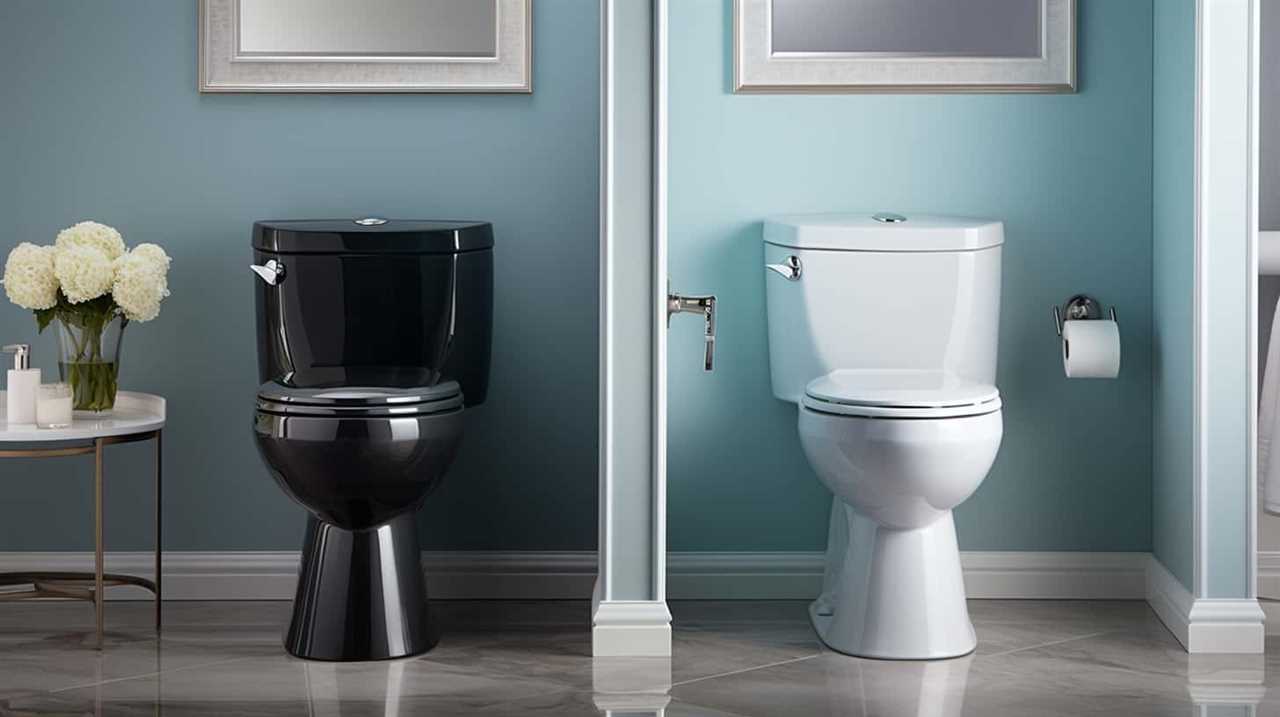
- Communal latrines were a common feature in Roman cities, providing a place for multiple individuals to relieve themselves simultaneously.
- Public toilets were also available, offering a more private space for individuals to use.
- These facilities were essential for maintaining public health and hygiene in densely populated areas.
- Roman engineers designed the latrines to have a constant flow of water, ensuring that waste was quickly flushed away, minimizing the risk of contamination and foul odors.
The Romans understood the importance of proper sanitation for maintaining public health. By providing communal latrines and public toilets, they were able to prevent the spread of diseases and maintain a clean living environment. The use of flowing water and efficient waste disposal systems demonstrated their advanced understanding of public hygiene. These facilities were a testament to the Romans’ dedication to promoting cleanliness and well-being in their cities.
Hygiene and Cleansing Rituals
We regularly employed various hygiene and cleansing rituals in ancient Rome, ensuring cleanliness and well-being. In addition to using water for personal hygiene, Romans had a variety of tools and practices to maintain cleanliness after using the toilet.
Toilet paper didn’t exist in ancient Rome, so alternative methods were employed. One common practice was the use of a sponge on a stick, called a ‘tersorium’, which was shared among users. This sponge would be soaked in water and vinegar for cleaning purposes. Another option was the use of a cloth or rag, which would be washed and reused. These practices, although different from modern standards, demonstrate the Romans’ commitment to maintaining cleanliness.
Transitioning into the subsequent section about waste disposal and sewage systems, it becomes clear that the Romans weren’t only concerned with personal hygiene, but also had sophisticated methods for waste management.
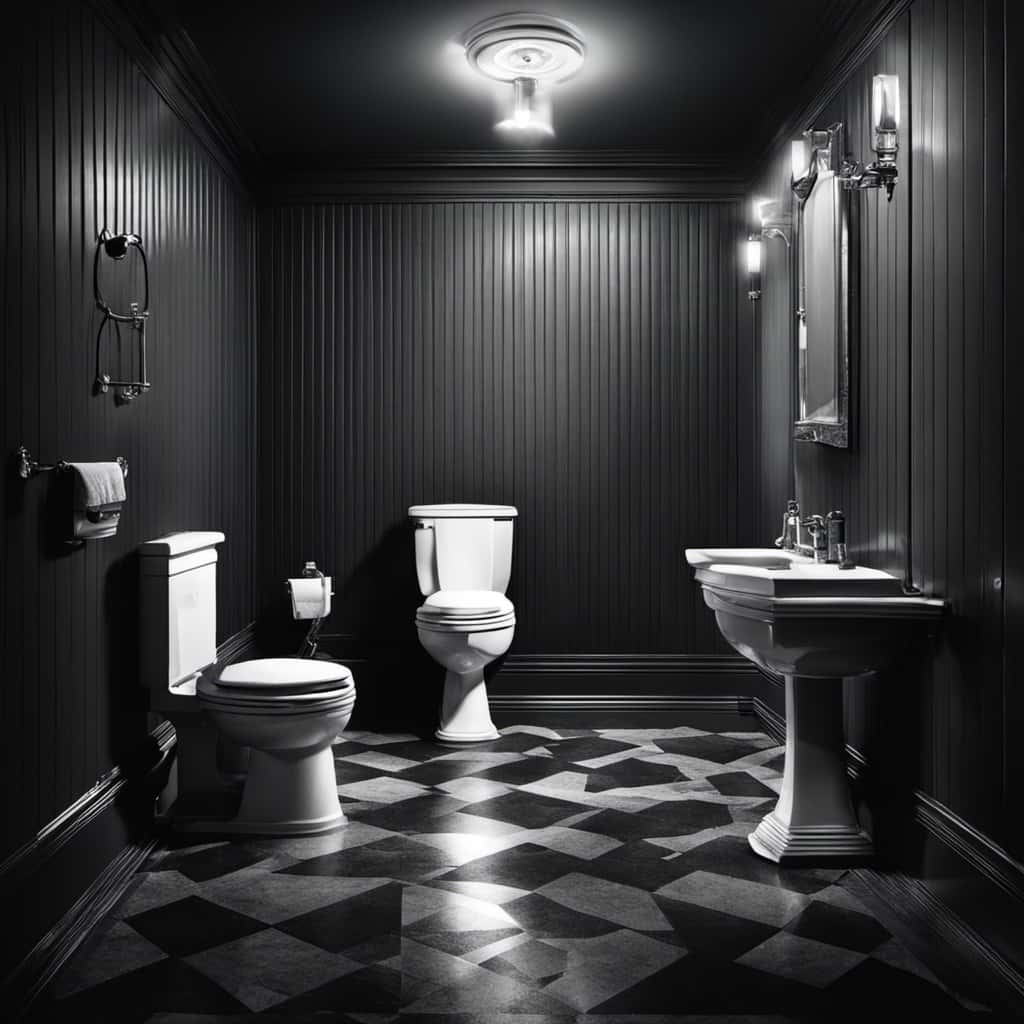
Waste Disposal and Sewage Systems
The Romans had efficient waste disposal and sewage systems in place to manage their sanitation needs. These systems were a testament to their engineering prowess and their dedication to public health. Here are some key features of their waste management and ancient plumbing:
- Sophisticated sewer systems: The Romans constructed a network of underground tunnels and drains to carry away waste and sewage from homes, public baths, and latrines.
- Public toilets: They built communal latrines connected to the sewer system, allowing for efficient waste disposal in densely populated areas.
- Aqueducts: These impressive structures brought fresh water to cities, ensuring a constant supply for cleaning and waste removal.
- Waste collection and disposal: The Romans employed workers to collect waste from homes and businesses, disposing of it in designated areas outside the city walls.
Frequently Asked Questions
How Were Toilets Constructed in Ancient Rome?
Ancient Roman latrine design was a complex process, involving advanced engineering and innovative techniques. Roman toilet construction techniques utilized a combination of underground sewage systems, stone or marble seats, and water channels for flushing and cleanliness.
Did Romans Have Any Specific Rules or Etiquette When Using Communal Latrines?
When it comes to Roman toilet customs, there were indeed specific rules and etiquette to follow in communal latrines. These practices, rooted in hygiene and social norms, played a vital role in daily life.
What Materials Were Commonly Used for Toilet Paper or Cleansing After Using the Toilet?
Toilet paper alternatives and historical methods of personal hygiene varied across cultures. Understanding these practices provides insight into the ingenuity and resourcefulness of ancient civilizations.

Were There Any Health Risks Associated With the Roman Waste Disposal and Sewage Systems?
There were indeed health risks associated with the Roman waste disposal and sewage systems. Inadequate waste management led to the spread of diseases such as cholera and typhoid, impacting the overall health of the population.
How Did Romans Deal With the Smell and Odor in Communal Latrines and Public Toilets?
To control odor and maintain communal latrine etiquette, Romans employed various methods such as using perfumes, aromatic oils, and natural substances like herbs and flowers. They also prioritized cleanliness by regularly cleaning and disinfecting the latrines.
Conclusion
In conclusion, the Romans had advanced sanitation practices for their time. They utilized aqueducts to provide clean water and built communal latrines and public toilets for convenience.
Hygiene and cleansing rituals were also important, ensuring cleanliness after using the facilities. Waste disposal and sewage systems were in place to efficiently remove waste from the city.
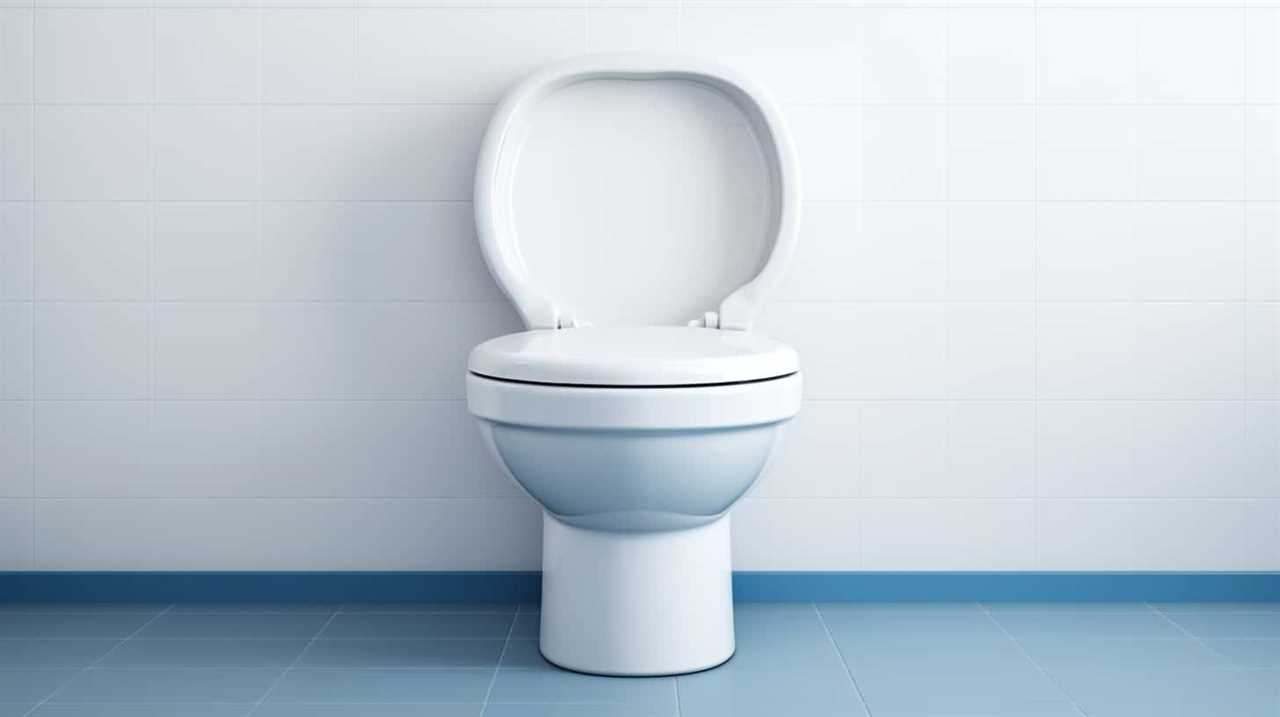
So, next time you’re worried about finding a clean restroom, just be grateful you don’t have to deal with Roman ‘bathroom selfies’!
